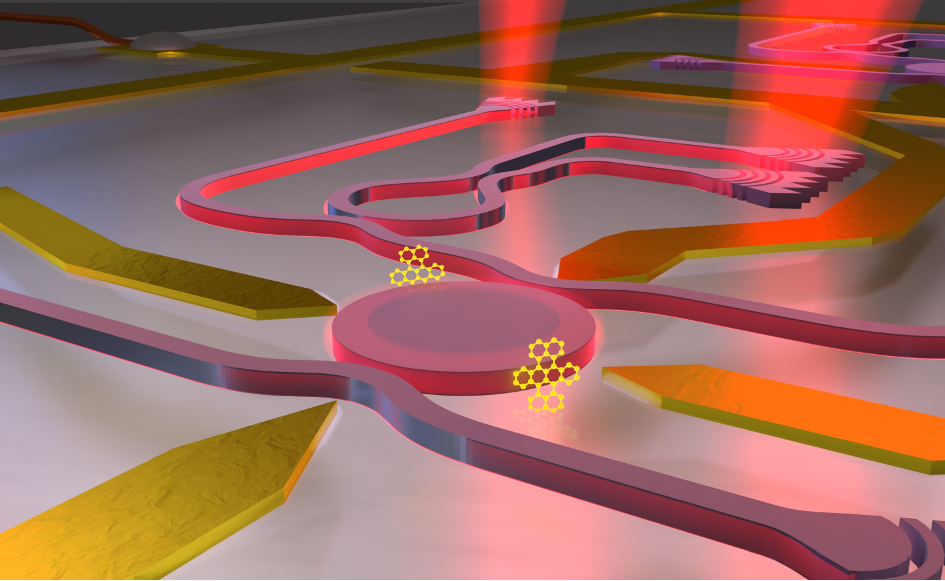On-chip interference of scattering from two individual molecules embedded in plastic
Physicists at the Max Planck Institute for the Science of Light (MPL) have succeeded in coupling two organic molecules embedded in a plastic film via an integrated photonics circuit.

We are in the midst of the 2nd quantum revolution, wherein the principles of quantum mechanics are used to build novel functional devices. In this context, quantum optical networks, where individual quantum nodes are connected by optical links, are a promising candidate for the distribution and processing of quantum information. This is crucial for secure quantum communication and solving computationally demanding problems. With the recent work published by OPTICA, researchers in the division of Prof. Vahid Sandoghdar have paved the way for the realization of such networks based on dielectric photonic structures and organic molecules embedded in plastic.
In this work, the MPL team has demonstrated a high degree of control over the coupling of two individual organic molecules to a microdisc resonator, enabling the interference of laser light scattered by the two resonant emitters. The prerequisite for this achievement was the efficient coupling of single molecules to the modes of a chip-based microresonator.
Fabricated in the MPL cleanroom, the resonator comprises a titanium dioxide disc only 6 µm in diameter— a tenth of the width of a human hair. A particular challenge was interfacing the resonator with single organic molecules. Conventionally, molecules for quantum optical applications require embedding in high-quality organic crystals to exhibit stable optical transitions. However, these crystals are difficult to grow in the vicinity of complex geometries, therefore, the team chose an unconventional approach and embedded the molecules in a film made from polyethylene (PE), a common plastic.
The plastic coating enabled the realization of low-loss resonators, which significantly enhance the optical transition of nearby molecules. This resulted in a coherent photon-molecule coupling of 75%, a record for integrated photonics with molecules. Using microelectrodes to control the resonances of individual molecules, the team connected two molecules via the resonator and studied the interference of the laser light scattered by this molecular pair. This achievement represents a substantial step towards the realization of molecule-based quantum optical networks. Furthermore, performing molecular quantum optics within a plastic medium constitutes a noteworthy accomplishment in its own right, opening avenues for flexible polymer-based photonics structures.
Find the full OPTICA article here:
D. Rattenbacher, A. Shkarin, J. Renger, T. Utikal, S. Götzinger, and V. Sandoghdar, On-chip interference of scattering from two individual molecules, Optica 10 (12), 1595-1601 (2023)
Contact
Edda Fischer
Head of Communication and Marketing
Phone: +49 (0)9131 7133 805
MPLpresse@mpl.mpg.de





